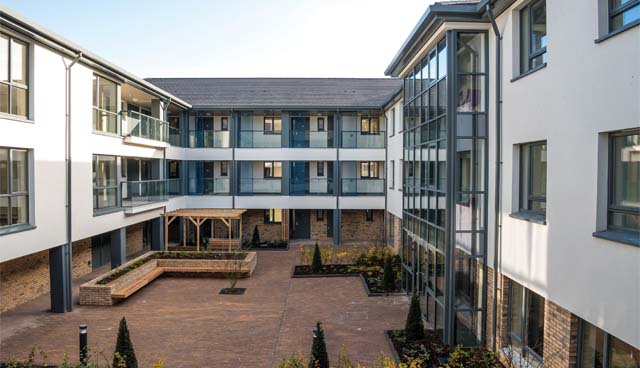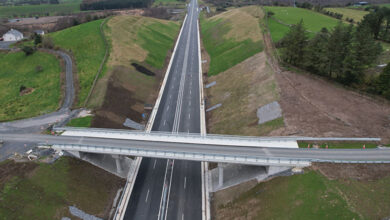Accelerating the delivery of new affordable homes

John Coleman, Chief Executive of the Land Development Agency (LDA), speaks to eolas about the LDA’s growth, its plans for 2022 and the hopes of building over 5,000 new affordable and cost rental homes under Project Tosaigh.
Coleman begins by tracking the progress of the LDA since its foundation on an interim basis in 2018: “We started off with no staff, no office, no infrastructure, and we have built a reasonably good platform now where we have advanced to 60 staff, and we have advanced sites through the various stages of the development process with the aim of starting construction for 862 homes in 2022.”
With a broader portfolio of roughly 5,000 homes, the LDA are advancing their process on state and local authority lands in partnership with local authorities. They have also targeted a separate 5,000 homes through Project Tosaigh, which “expands and accelerates our ambitions in the affordable space”, Coleman says.
“We have increased the site portfolio significantly; at launch we had promises of sites that could yield around 3,000 homes, and between Project Tosaigh, our current developments and land transfers under Housing for All (HfA), we think that site capacity is now around 25,000,” Coleman says. “The LDA was set up in the first place as a land assembler longer-term and between HfA land transfer announcements and active areas, which are focused on design, master planning and problem solving around infrastructure, we have three strategic areas in our portfolio: Limerick Colbert Station, Sandy Road in Galway, and the Digital Hub in Dublin, with more planned in the future.”
In the short term, the LDA is focused on the delivery of affordable and cost rental housing on state lands; their longer-term plans consist of land assembly and the coherent delivery of larger scale strategic areas for sustainable development and regeneration. Coleman details their 2022 plans, where it is hoped that two development projects will progress to site, and five planning applications to deliver almost 3,000 homes will be lodged. The LDA’s hope is that some of these plans will have started construction by 2024. It plans on commencing two strategic area masterplans, in Inchicore and the Digital Hub, which has been transferred to the LDA, later this year. Through Project Tosaigh strategic partnerships, the LDA plans to deliver “about” 5,000 homes over the term of the initiative, from 2022 to 2026.
Planning activity in Dundrum, Balbriggan, Skerries and Devoy covers roughly 2,400 homes, once lodged this will be followed by St Theresa’s Gardens. Design teams are at work on Cherry Orchard and Cromcastle, to be built in partnership with Dublin City Council, and Dyke Road in partnership with Galway City Council.

“This is an emerging theme; we have very close working relationships with local authorities which are critical to the LDA’s work,” Coleman says.
Work in Shanganagh in south Dublin “should” commence later this year, with construction tender returns being evaluated at the moment. When completed, the project will deliver 597 social and affordable BER A-rated homes, 306 of which will be cost rental. The St Kevin’s site in Cork, currently going through prequalification for the construction tender, will commence enabling work this year on a scheme that will deliver 264 homes.
These are not the only projects in the LDA’s sights: “There are 10 sites that are that can yield about 5,000 homes across Dublin, Mullingar, Naas, Galway, Limerick and Cork, depending on what we can get through the planning system,” Coleman says.
Delivering these houses comes with a total focus on affordable housing, Coleman says, a focus that has been a significant shift since the current government took office. “What that looks like to us is that we are trying to roughly land at one-third of a person’s net income,” he says. “In terms of the market in a place like Shanganagh, that means a 25-30 per cent reduction on market rates. There are good discounts compared to the market, but we are focused on affordability rather than pegging ourselves to the market.
“We think about this in terms of deciles of income; we are not there to target the ninth and tenth deciles, we think they can cover their own costs, and we are not targeting those who qualify for social housing either, it is those that are squeezed in the middle that do not qualify for anything.”
With its mandate on state lands, Coleman estimates that the LDA could deliver 2,500 homes by 2026, but instead is looking to treble this target by engaging in Project Tosaigh and leveraging the private sector to bring its land into the affordable housing net. “In Housing for All, we had a number of empowerments, including increased spending capacity because of the increased debt ceiling that has been allocated to the LDA, we have a number of additional lands that will look at the land assembly section of the LDA, but most significant was the launch of Project Tosaigh,” Coleman says.
“We are targeting working in partnership with house builders that have the ability to deliver at scale and that have access to land by way of funding arrangements and contracting arrangements to secure 5,000 homes over a four-year period. We are targeting delivery as early as 2022. 5,000 over four years is possible; we think we will have a bias towards cost rental and when the dust settles on the various proposals that is where a lot of them will land. The current process is based on forward purchase agreements, which is a commitment to purchase at a certain price point in the future, but we will be interested in the future in bringing forward more innovative procurement methodologies to facilitate other types of arrangements with builders and delivery partners.”
Concluding, Coleman focuses on the LDA’s strengths and how they can work with other partners in affordable housing delivery: “The strengths of the LDA are delivery, capability, and a project management platform. We have the legislative mandate to open up state lands. Typically, state lands are under some other use such as train stations etcetera, but local authorities have land for housing and that is why they are such a critical partner in our delivery trajectory. The LDA has no track record in operating or delivering to the client aside from the emerging construction side of things, the AHBs have a credibility and trust in terms of that delivery and there is really strong potential for that to be levered to everyone’s benefit into the future.”





